
It Takes a Village
As providers, you can help parents connect and share experiences.
- Show the “Spending Time Together” video. Acknowledge that parenting can feel lonely and overwhelming, and parents can involve kids in helping out. Lead a conversation about ways to engage the whole family in everyday activities. Ask: what are some ways you might involve children as you clean, prepare a meal, sort laundry, and run errands? Write participants’ suggestions on chart paper.
- Then break into smaller groups. Have groups share and discuss one way that they feel confident as parents and one way that they feel overwhelmed.
- Ask participants to talk in their groups about whether they have a system of support and what they can do to develop one. Have participants share ways that they get the parenting support, advice, and positive pick-me-ups that they need.
- Distribute the printable for parents to complete and take home.
- As participants leave, play the “What I Am” video.
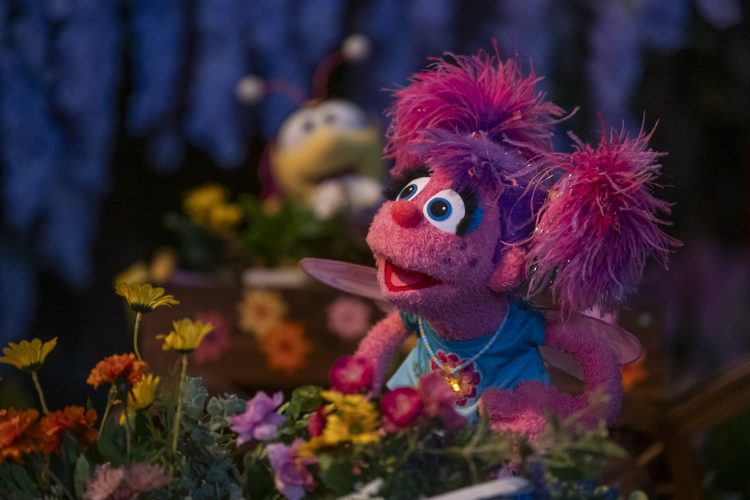
Watch and Play: Abby's Magical Beasties
Watch this episode and explore ways to extend the learning at home.
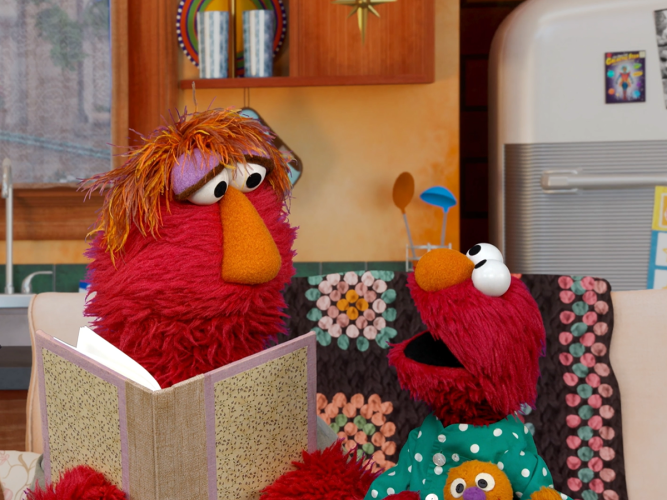
Go To Sleep, Elmo!
Handling a middle-of-the-night monster moment.
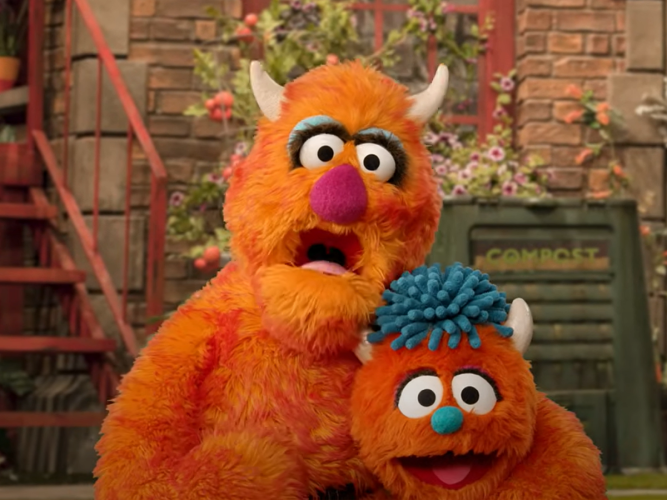
Monster Meltdown
Meltdowns happen… but they are somewhat predictable! As you try to handle them, curiosity and patience go a long way.
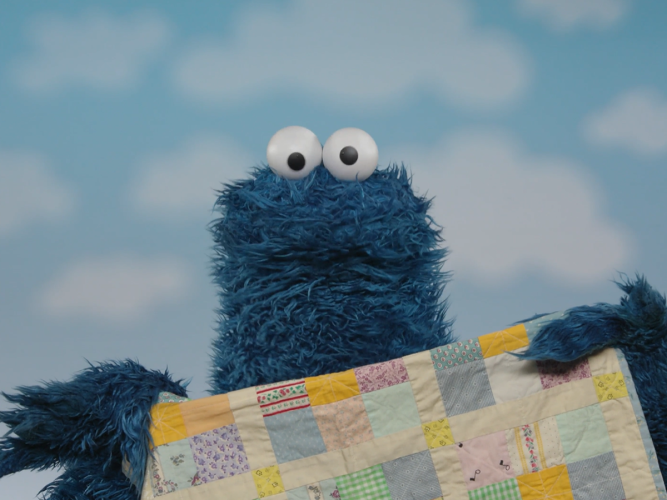
Cookie Monster’s Beach Day
When children are in the hospital, their imagination can become a valuable tool in soothing themselves.
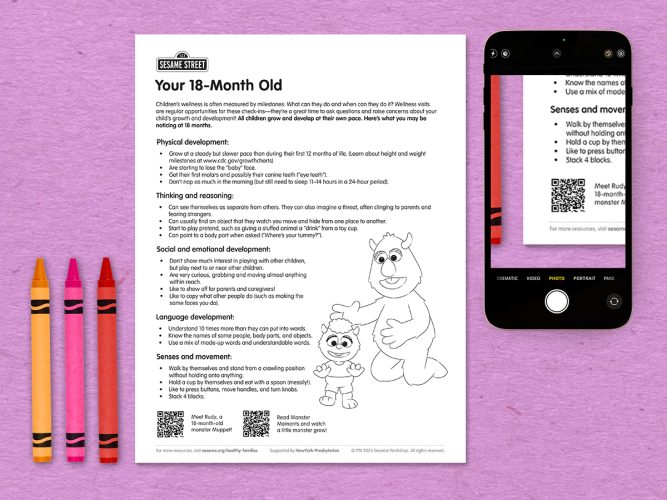
Milestones: Your 18-Month Old
All children grow and develop at their own pace; use this chart to guide your expectations and observations so you can talk to your child’s pediatrician about questions or concerns.
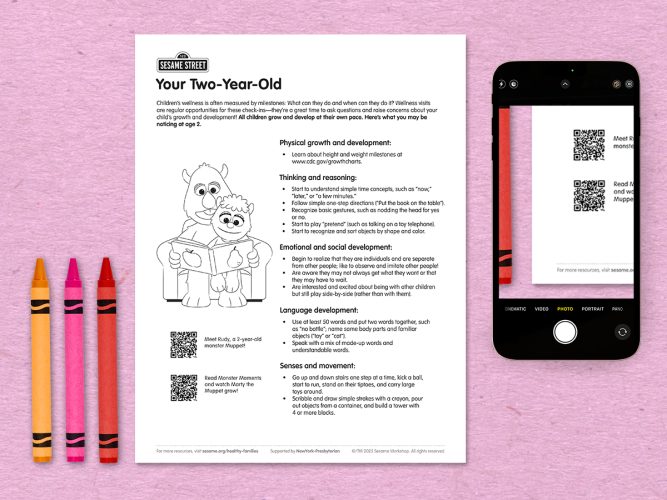
Milestones: Your Two-Year-Old
All children grow and develop at their own pace; use this chart to guide your expectations and observations so you can talk to your child’s pediatrician about questions or concerns.
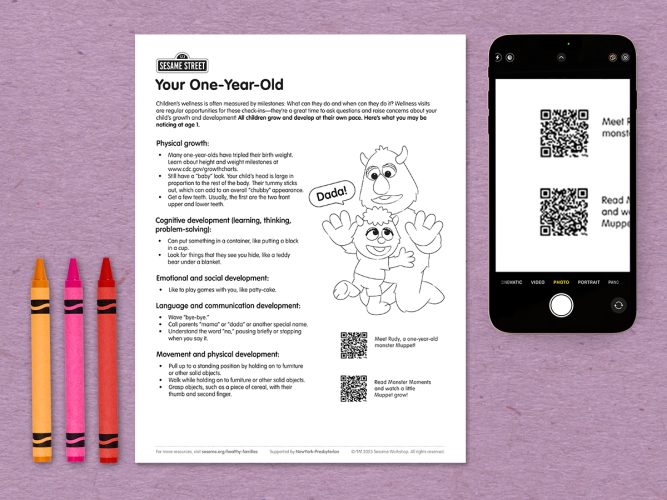
Milestones: Your One-Year-Old
All children grow and develop at their own pace; use this chart to guide your expectations and observations so you can talk to your child’s pediatrician about questions or concerns.
